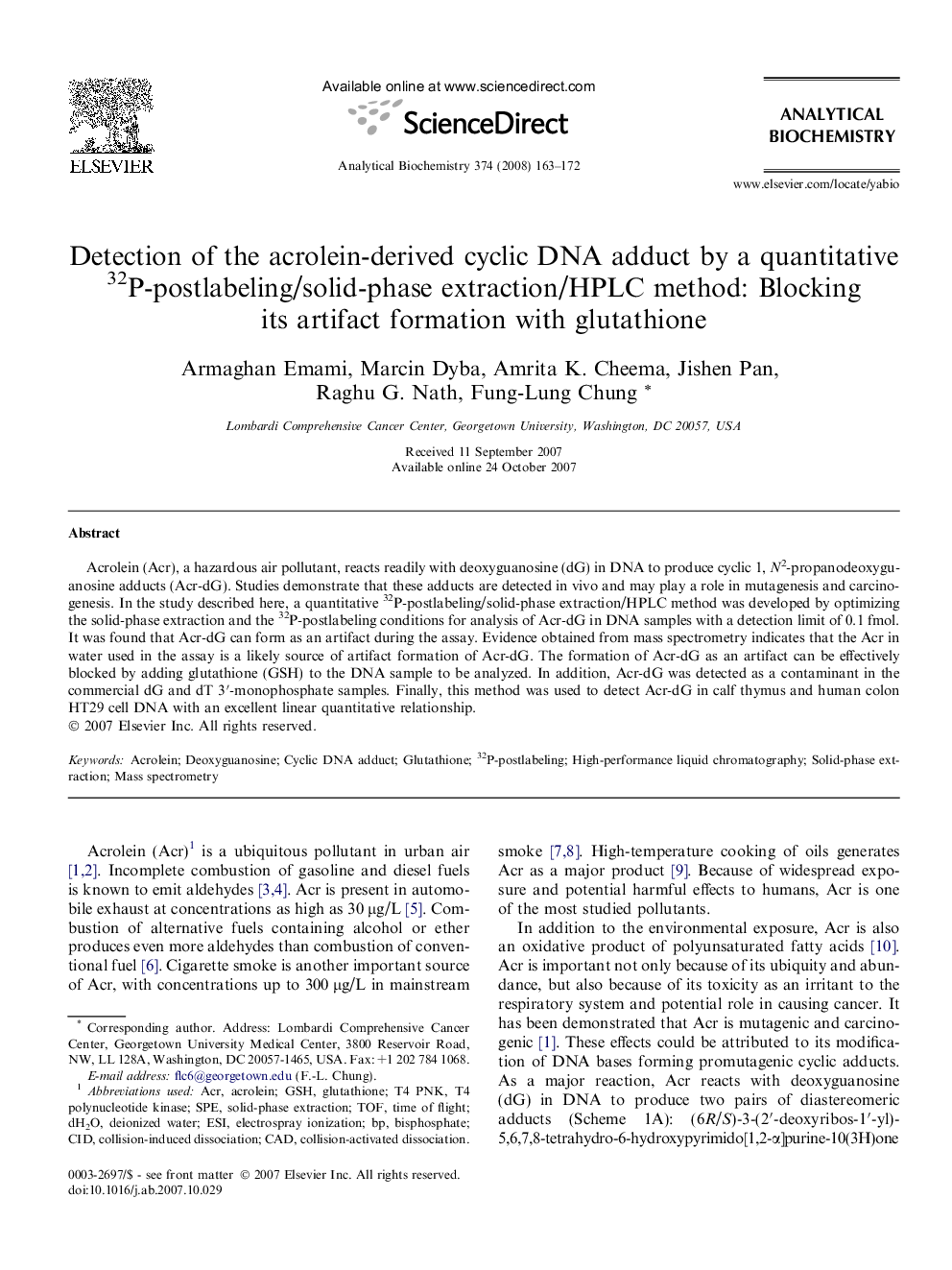| Article ID | Journal | Published Year | Pages | File Type |
|---|---|---|---|---|
| 1177296 | Analytical Biochemistry | 2008 | 10 Pages |
Acrolein (Acr), a hazardous air pollutant, reacts readily with deoxyguanosine (dG) in DNA to produce cyclic 1, N2-propanodeoxyguanosine adducts (Acr-dG). Studies demonstrate that these adducts are detected in vivo and may play a role in mutagenesis and carcinogenesis. In the study described here, a quantitative 32P-postlabeling/solid-phase extraction/HPLC method was developed by optimizing the solid-phase extraction and the 32P-postlabeling conditions for analysis of Acr-dG in DNA samples with a detection limit of 0.1 fmol. It was found that Acr-dG can form as an artifact during the assay. Evidence obtained from mass spectrometry indicates that the Acr in water used in the assay is a likely source of artifact formation of Acr-dG. The formation of Acr-dG as an artifact can be effectively blocked by adding glutathione (GSH) to the DNA sample to be analyzed. In addition, Acr-dG was detected as a contaminant in the commercial dG and dT 3′-monophosphate samples. Finally, this method was used to detect Acr-dG in calf thymus and human colon HT29 cell DNA with an excellent linear quantitative relationship.
